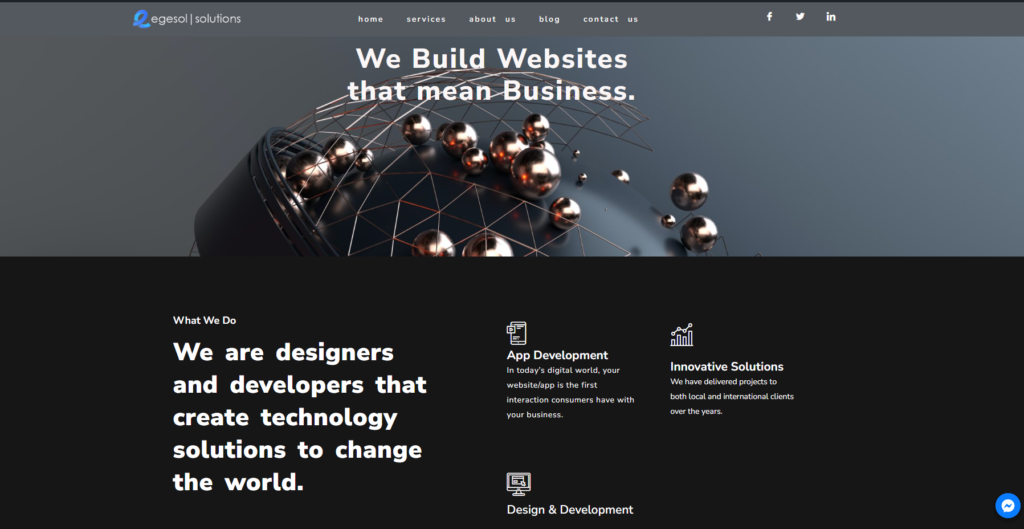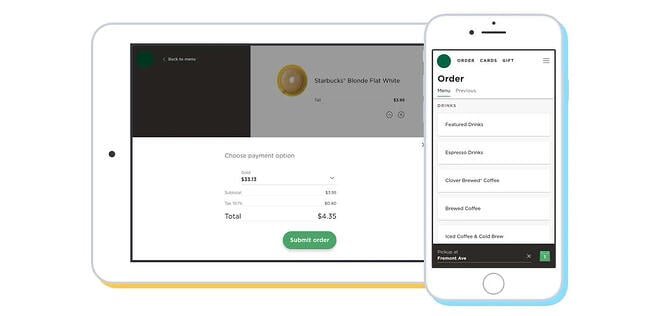11 Web Development Trends to Expect in 2023

In 1983, the internet was born . Now, there are more than 1.58 billion websites and approximately 5 billion daily users on the internet. As the internet has evolved, so have web development trends. As a website owner, keep an eye on web development trends so you can enact changes that incorporate new best practices. And the stakes are high — failing to keep up with recent trends can seriously affect your website performance and user experience.
Web Development Trends in 2022
- Progressive Web Apps (PWAs)
- AI Chatbots
- Accelerated Mobile Pages
- Single-Page Application
- Optimized Voice Search
- WordPress Development
- Motion UI
- Serverless Architecture
- Responsive Site Design
- Dark Mode Standardization
- Improved Native Cybersecurity
You might be surprised to notice that many web development trends already exist. They’ll become more prevalent in the coming years, so adapting these best practices is more critical than ever. Let’s take a look.
1. Progressive Web Apps (PWAs)
While progressive web apps (PWAs) aren’t new, their latest iteration will replace web apps for good. PWAs help websites load in no time and work offline in apps like Google Maps. Companies including Starbucks, Uber, Pinterest, and Twitter use PWAs for an improved user experience — and in 2023, many more organizations will begin to catch on.

You might be surprised to notice that many web development trends already exist. They’ll become more prevalent in the coming years, so adapting these best practices is more critical than ever. Let’s take a look.
In the second quarter of 2022, over 58% of International web traffic was from mobile — not including tablets. With the increased usage of smartphones and tablets to perform various online tasks, it has never been more essential to revamp web applications into PWAs.
In addition to providing unmatched user experience, PWAs offer additional benefits such as reduced development costs and seamless maintenance for the provider. Plus, they visually look and act like a regular web page.
In 2023, HTML , CSS, JavaScript, React, WebAssembly, or Angular will be used to write PWAs.
2. AI Chatbots
In 2023, AI chatbots will become even more sophisticated to meet users’ needs. To achieve this, bots will more efficiently match user behavior by leveraging machine learning, natural language processing, and information retrieval techniques.
Besides assisting companies in performing faster operations using voice or text chats, AI-enabled chatbots also help improve customer experience . You can use an AI chatbot to collect data, answer frequently asked questions, and solve other issues. The result is a seamless digital experience for customers to enjoy.
Many prominent B2C companies already serve their customers with AI chatbots. According to Forbes, marketers’ use of AI increased by 190% between 2018 and 2020 , with many functioning within Facebook Messenger, Whatsapp, and Skype, instead of standard chatbots. Expect to see AI chatbots gain even more momentum in 2023.
3. Accelerated Mobile Pages
Almost 70% of consumers indicated that page speed impacts their decision to purchase from an online seller, according to Unbounce. In other words, you should not ignore your site’s speed. That’s where accelerated mobile pages come into the picture.
First launched by Google in 2015, the accelerated mobile page (AMP) provides mobile users with lightning-fast digital experiences. In addition to offering seamless user experiences and decreasing bounce rates, Google’s AMP> may improve core business metrics. These metrics could even be as important as the number of conversions on web pages.
4. Single-Page Applications
Considered one of the most significant recent trends in web development, single-page applications (SPAs) are JavaScript-based web applications that load a single HTML page in a visitor’s browser and dynamically update content as needed without refreshing the page.
The development community and Google, Facebook, and Twitter have widely adopted SPAs. Because users can use a website without loading an entirely new page from the server, the overall performance is much better. While more effort is involved in maintaining SPAs, it could be well worth the tradeoff.
Besides being cost-effective and relatively easy to create thanks to the popular AngularJS framework , SPAs consume less server space and efficiently provide users’ information on a single page without needing to navigate around. These benefits make SPAs a win-win for developers and site visitors alike.
As online consumers expect faster and simpler app experiences, we can expect the SPA trend to continue in the coming year.
5. Optimized Voice Search
First introduced by Google in 2011, voice search is rapidly rising in popularity. Intelligent virtual assistants like Alexa and Siri showed unprecedented market growth in 2019 and are forecasted to continue to grow rapidly, according to an analysis by Grand View Research .
According to Google , 27% of individuals use voice search on mobile devices. A Microsoft study reveals that 72% of users have used a digital assistant within the last six months.
6. WordPress Development
The WordPress CMS powers over 40% of all websites , and a significant presence demands attention. An open-source platform, WordPress continually adds more features to meet users’ needs. There are plenty of WordPress-specific web development trends, and it’s worth diving into them.
WordPress is expected to get a facelift in the new year in various ways. For instance, a new navigation structure will enable a more straightforward user experience. This rework aims to bring together the post editor and the template experiences — which are currently siloed. WordPress is also offering new design tools to bring your site to life.
7. Motion UI
Today’s consumers don’t only expect faster and mobile-friendly digital experiences — they also want richer and more interactive ones.
That’s one reason Motion UI has become so popular. Motion UI is a front-end framework that enables developers to build fully responsive websites and mobile applications and to use predefined motions within a native app setting. Using this framework, you can make an element slide, spin, bounce, transition, and more.
8. Serverless Architecture
There has been an ongoing search for technology that helps to reduce system overloading, data loss, and development costs. Enter: Serverless technology.
Serverless architecture runs on cloud technology which allows users to run code for virtually any type of application or backend service with no administration. No provisioning, managing, or upgrading servers is necessary. Amazon, Google, and Microsoft are the leading examples of companies using and providing serverless architecture.
9. Responsive Site Design
Responsive design has never been quite so crucial. As mentioned, mobile devices account for over58%of web traffic worldwide. Plus, nearly three-quarters of global ecommerce sales are completed on mobile . From these stats, it’s clear that taking a mobile-first approach to web development has become essential.
Of course, many developers have taken this approach for years. But what being “mobile-friendly” really means is constantly fluctuating. In 2023 it means using geolocation data to deliver highly personalized experiences to users, offering one-click ordering on ecommerce apps, and incorporating biometric authentication like fingerprint scanning or voice recognition, among other trends. The result of implementing responsive design is multifaceted — your visitors will enjoy a more seamless user experience, plus it will help enhance brand reputation.
10. Dark Mode Standardization
In recent years, dark and low-light websites have gained popularity. 2023 will continue to see websites and apps offering dark mode user interfaces (UIs) , as studies have found that at least 8 in 10 users prefer to use dark mode whenever possible .
Facebook and Twitter have already implemented this feature. These apps provide an easy option to toggle between the two modes, depending on the reader’s preference or system settings. Mastering website personalization is essential as visitors expect a completely customized experience, so be sure you deliver on that promise.
11. Improved Native Cybersecurity
Cybersecurity — which refers to the practice of securing data, networks, and computers from misuse — is one of the most critical concerns of 2023. Every company, no matter its size, is vulnerable. For example, in June 2021, hackers scraped the accounts of 700 million LinkedIn users to acquire personal information, including full names, emails, and phone numbers.
According to CDN provider Cloudflare, the number of distributed denial of service (DDoS) attacks nearly doubled each quarter in 2020 . Hours of downtime, significant loss of revenue, and a damaged reputation are just a few effects of this form of attack.
With such an alarming increase in cybercrimes, website development has adapted to make it easier to safeguard company and customer data. There’s already been a shift toward application-based multi-factor authentication like Google Authenticator, patch management , and Security Operation Centers (SOC).

